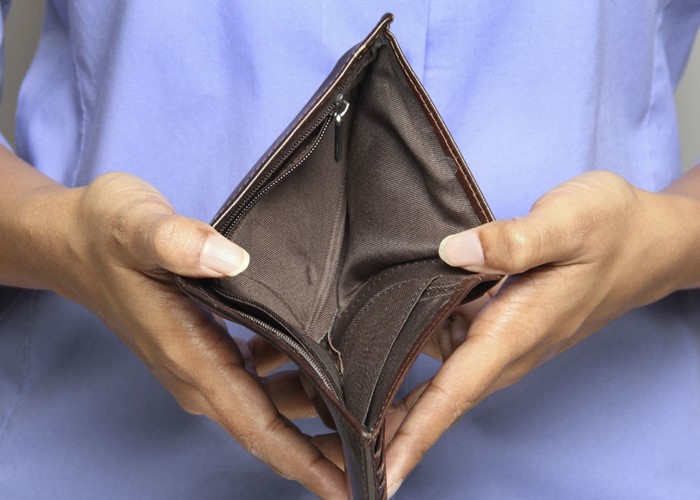Why you've just made £2.2 billion

Taxpayers have today made £2.2 billion from a bailed-out bank, but it's bad news for borrowers and savers...
Lloyds Banking Group, the behemoth of British banking, released a very positive first-quarter trading statement on Tuesday morning.
Lloyds is back in profit
Britain’s biggest retail bank reported that it made a profit in the first three months of this year. Even better, it expects to make a profit for 2010 as a whole.
Related goal

Make money from the stock market
Taking the plunge into the stock market isn't for the faint-hearted, but investing can help you achieve your financial goals.
Do this goalLloyds has been in intensive care since September 2008, when -- after the collapse of US investment bank Lehman Brothers -- it rushed into a hasty merger with HBOS. Reckless lending at HBOS, particularly to property and other firms, then caused a meltdown. Thanks to £24 billion of bad debts, Lloyds reported its biggest-ever loss -- £6.3 billion -- in 2009.
However, the tide seems to have turned, largely thanks to falling impairments (bad debts and losses) in Lloyds’ lending to businesses and consumers. What’s more, Lloyds’ income is rising and its costs are down, plus savers added £5 billion to their savings balances between January and March.
- Adopt this goal: Make money from the stock market
Terrific news for taxpayers...
Of course, Lloyds was one of several banks bailed out by taxpayers at the height of the credit crunch. In total, we lobbed £17.4 billion into Lloyds, in return for over two-fifths (41%) of its shares. With the share price at 71p, our 27.6 billion shares are now worth £19.6 billion.
In other words, we’ve made £2.2 billion from bailing out Lloyds, which is terrific news for fed-up taxpayers, relieved politicians, and red-faced regulators.
...but not great for borrowers and savers
One setback is that Lloyds failed to meet its overall target for new lending over the past 12 months. Although it beat its goal for mortgage lending, Lloyds’ business lending has slipped as companies hunker down and pay off their debts.
As a partly state-owned bank, Lloyds is definitely seen as ‘too big to fail’. Thanks to its implicit government guarantee, Lloyds is a safe haven, enabling it to lure away customers from rivals that aren’t taxpayer-owned. Building societies in particular have complained about this unfair edge.
Related blog post
- Ed Bowsher writes:
Hung parliaments and economic crises
Would a hung parliament inevitably lead to an economic crisis?
Read this post
The big problem is that Lloyds’ strength and size distorts competition in retail banking. The bank is already the biggest player in current accounts (22 million customers), savings (21 million savers), personal loans, credit cards and mortgages. Thus, Lloyds’ huge market shares give it monopolistic power in the all-important world of high-street banking.
Unfortunately, history suggests that commanding market shares often lead to anti-competitive behaviour. Therefore, competition regulators need to watch Lloyds like a hawk for evidence of predatory pricing and other behaviour harmful to consumers and businesses.
- Read our blog: Hung parliaments and economic crises
Fancy a game of NIM?
Already, there are signs that Lloyds is making the most of the cheap funding on offer. Thanks to the Bank of England’s base rate being at an all-time low of 0.5% a year, banks can borrow very cheaply and then lend on this money at far higher rates.
Hence, one of the most important indicators for a bank is its NIM: net interest margin. This is the gap between the (higher) interest rates charged to borrowers and the (lower) interest rate charged to savers.
Lloyds revealed that its NIM is on target to be 2% for 2010, which is a great improvement on 2009’s figure. However, higher NIMs mean worse deals for both borrowers and savers -- so we pay the price for Lloyds’ bumped-up margins.
For example, the typical credit card charges a rip-off rate of 18.8% APR. This makes credit cards the most expensive they’ve been since 1998!
What should you do?
As taxpayers, we should all be pleased that the government is sitting on a profit of £2.2 billion from its stake in Lloyds. Likewise, if you’re a Lloyds shareholder, enjoy the fact that its share price has risen strongly, up almost two-fifths (38%) since the start of this year.
However, if you’re a saver or borrower, higher banking profits mean worse deals for you. Therefore, my advice would be look for ways to reduce the profits which banks are making from you.
Five of the best things to do are:
- If you have a mortgage, then start looking around for a cheaper home loan.
- If you’re unhappy with the charges and rates on your current account, then ditch and switch.
- Earn a higher rate of interest on your spare cash with a Best Buy savings account.
- To freeze the interest on your plastic debts, grab a 0% balance transfer.
- Use our free online banking tool to budget effectively
Want to have more money to spend on stuff that matters to you? Learn to budget effectively using lovemoney.com’s brand new online banking tool. It enables you to categorise all your transactions from different bank accounts and credit cards so you know exactly what you're spending your money on throughout the month, using a single log-in. Find out more
More: Find a cracking credit card today! | Cheaper car insurance in ten steps | Boost your pension by 20%
Comments
Be the first to comment
Do you want to comment on this article? You need to be signed in for this feature